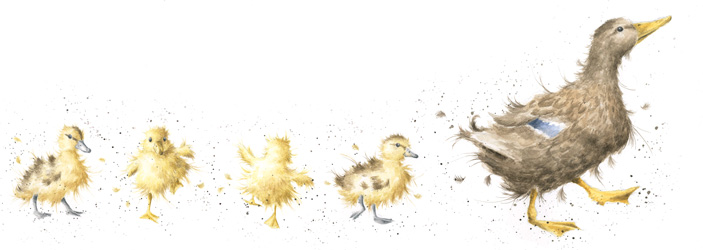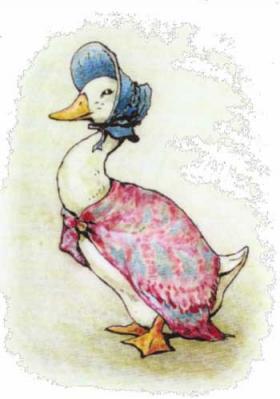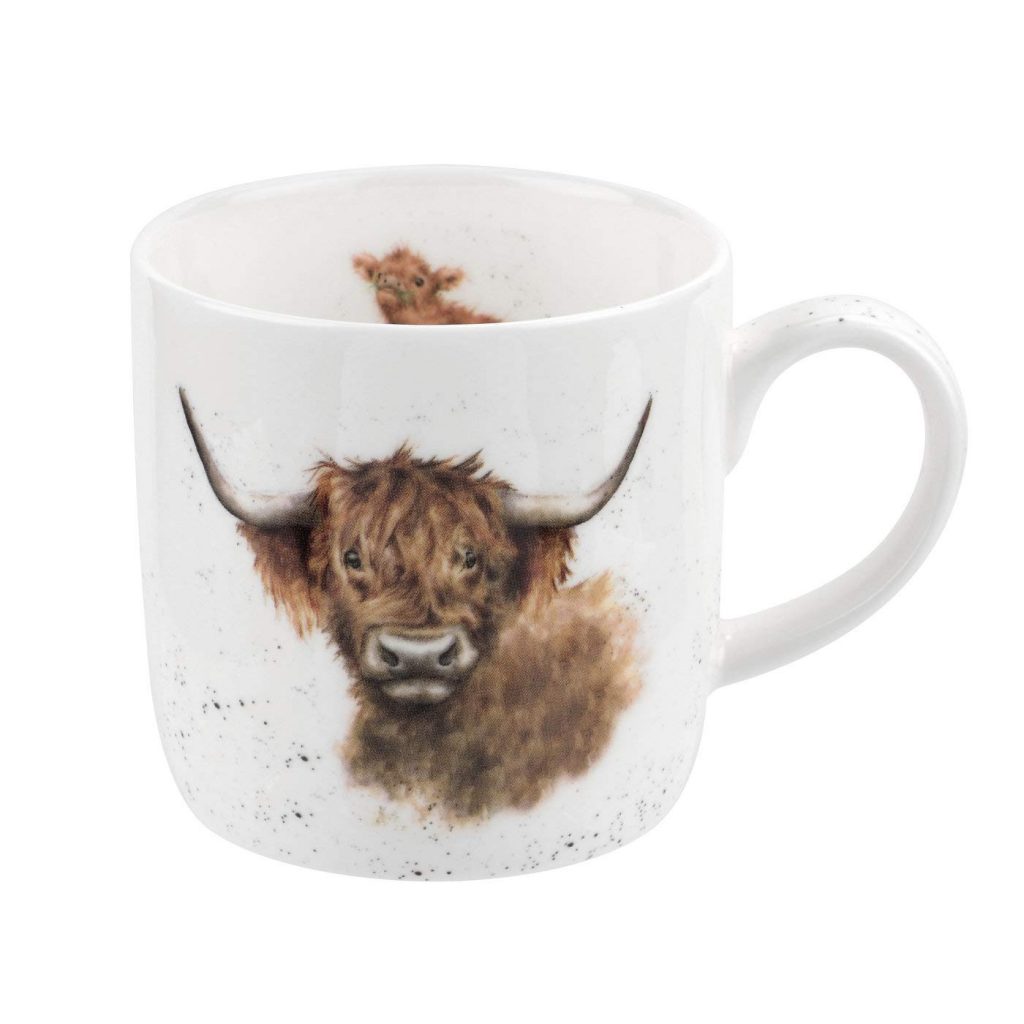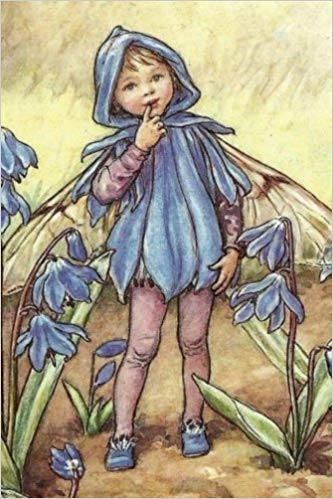It sometimes happens that the town child is more alive to the fresh beauty of the country than a child who is country born. ~ Beatrix Potter

I first came across Hannah Dale’s designs in a National Trust shop and immediately fell in love. Her rather tousled but joyfully animated wildlife are utterly heart-warming, and I have indulged in Wrendale cups, cards and books ever since. Dale provides the mouth-watering detail of British wild-life, that I once loved in Beatrix Potter’s child-sized books, but without Potter’s urge to anthropomorphize.

As an aside, Bill Bryson once wrote that Beatrix Potter’s books were too twee for words. He has obviously never opened a single book. Despite their bonnets and blue jackets, Potter’s characters live among the brutality of the natural world. Remember how Squirrel Nutkin loses his tail to Old Brown Owl, Tom Kitten is nearly consumed by rats, and the wily Mr. Tod attempts to put Jemima Puddleduck on his luncheon menu? It could be argued that this is too much reality for small children, despite the quaint illustrations and the book’s appealing size.
Dale’s paintings provide a different reality, and it is difficult not to consider becoming a vegetarian for the sake of her appealing illustrations. Particularly since my Hannah sent me her latest book ‘The Farmyard Set: a celebration of friends on the farm.’ I am, of course, smitten. Expanding from British wildlife to our favourite farm animals, she is now inspiring me to create my own hobby farm, by adopting as many real-life Hannah Dale animals as I can lay my hands on. Remember Tom and Barbara in ‘The Good Life,’ set in suburban Surbiton in the 1970s? Watch out Margot, here I come…

Of Dale’s plethora of delicious illustrations,one of my many favourites – honestly, it’s impossible to choose just one – is the Highland Cow. I fell in love with these gorgeous animals many years ago, when I first met them in Kent, where I was working for the National Trust at Winston Churchill’s old home at Chartwell. With their beautiful woolly coats in a myriad autumn colours, these long-horned cows originate from the highlands of Scotland – obviously! – and the Outer Hebrides. In the past 200 years, these Highland cattle have caught the travelling bug. They first migrated to Victoria, Australia in 1841 and discovered their way to Canada about the same time. These days, they are also wandering about in Denmark, Finland and the States. Apparently Queen Liz is mad about them too, and has kept a herd at Balmoral since 1954. Only the group noun is not ‘herd’ but ‘fold,’ after the stone lodgings that were built to keep them warm through winter nights.
Highland cattle are raised primarily for their lean and luscious meat – which tasty though that sounds, is almost enough to turn me off meat-eating forever. Have you seen their eyes? They also produce wonderfully creamy milk. And now, not only do I have one on my favourite coffee mug, but I have found several real ones roaming around the Isle of Wight.
Enough of cows. Back to wildlife. After six years in Manila, free of any wildlife bar the odd pigeon and a handful of feral cats, I am still getting a buzz out of bird song, wildflowers and native fauna. We regularly spot beautiful, tawny buzzards perching on fence posts or on hedges. Their numbers had been decimated by pesticide poisoning and human hunters, but they have recently been making a terrific comeback. On the other hand, Great White Egrets – a type of heron – are a rare sight here on the Isle of Wight, so we were very excited to see one wading through Brading Marshes recently, on elegantly long legs, pausing to pose haughtily for a couple of keen photographers. The Little White Egrets are more common and we often come across them paddling along the shoreline when we stroll down to the beach after dinner. Also, the solitary grey crane we used to chat with regularly on the Alzette in Luxemburg appears to have followed us here and taken up residence on the reef at Bembridge.

As well as indulging in some amateur bird watching, my childhood memories of Flower Fairies have come to the fore as we wander through water meadows dotted with bright yellow marsh marigolds and bird’s foot trefoil, pink campions and wild orchids, into woodlands carpeted in bluebells and wild garlic, and over the Downs thickly coated in gorse bushes smelling of Pina Colada or coconut suntan cream.
As we’ve wandered the coastal path, strolled along the Medina or the Yar, meandered through hidden valleys or clambered up on the Downs, we have also spotted many a well-fed bunny and a couple of foxes. And recently, on our way home from the pub, we were overtaken by a pair of galloping badgers. Yes, really! The sturdy, short-legged badger, like the wombat, can run surprisingly fast when necessary – a solid competitor for the 100 metre dash, if not for long distance marathons – and they careered past us in tandem before disappearing into a nearby garden. Our neighbour says he once had a sett of fifteen badgers in the garden until they started digging up his lawn and he politely encouraged them to move into the overgrown garden next door!
My One & Only now has his own Hannah Dale mug featuring a cuddly looking grey and white badger. (It was once known locally as ‘Old Brock,’ the Celtic word for grey.) Despite their disruptive penchant for excavation, culling badgers has become wildly unpopular in the UK, where the badger is now considered an iconic British species, although sadly, it is rarely seen as more than roadkill due to its nocturnal habits and its underground living quarters.
‘Human language is lit with animal life: we play cats-cradle or have hare-brained ideas; we speak of badgering, or outfoxing someone; to squirrel something away and to ferret it out.’ ~ Jay Griffiths
Perhaps the badger’s high profile has grown from its regular appearance in children’s literature. Remember the grumpy Mr. Badger from ‘Wind in the Willows?’ A stoic and solitary character who lives in the Wild Wood, he is considered learned and wise by the other animals, and works hard to reform the impetuous, irresponsible Mr Toad. In T.H. White’s children’s classic cum Disney movie, The Sword and the Stone, the wizard, Merlyn transforms Arthur into a small brock, so he may learn lessons in kingship from a wise old badger. JK Rowling may have remembered these characters when she endowed Hufflepuff House with the emblem of a badger: the house whose students are known for their patience, hard work and loyalty.

Another popular animal in children’s fiction is the red squirrel. Neat and petite, with russet fur, bottlebrush tail and tufted ears, it can be hard to find, as it prefers to stay hidden high in the canopy of broadleaf woodland. Native to Britain, it has been bullied almost out of existence by the imported grey squirrel. Today, it is seen very rarely in England, although it is still reasonably common in Scotland, and, much to my surprise, here on the Isle of Wight, too, where it is protected from everything but cars, and where the grey squirrel has failed to swim across the Solent. We have managed to spot a few, for a fleeting moment, as they skibble up the trunk of an oak tree or dash along a fence line. There are many signs around the island asking drivers to go slowly, and be aware of the local red squirrels, and their presence has also been widely publicized by the IOW Red Squirrel Trust dedicated to protecting both them and their habitat. In a lovely little church in Newtown, I donated to the charity box and came home with a very sweet knitted squirrel in a crocheted yellow dress and bonnet. Very Beatrix Potter.
Every walk we take, whether it’s a short stroll down to the beach, a strenuous hike along the cliffs, or a meander through the marshes, we are constantly pausing to watch the ducks or the moorhens, bending down to photograph an unknown wildflower or identifying a pretty, floral moon jellyfish that has washed up on the sand. Today, it’s hard to imagine a world on the thirty ninth floor, bereft of wildlife beyond an episode of Life on Earth on the telly.
*With thanks, yet again, to Google, and to the Wrendale website for the lovely photos.
